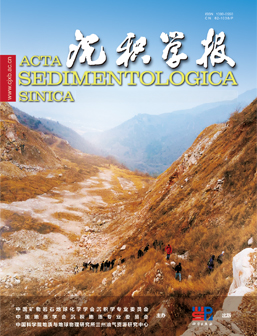Geochemical Characteristics of Elements in Surface Sediments of the East Mariana Basin and Their Indicative Implications
doi: 10.14027/j.issn.1000-0550.2024.002
- Received Date: 2023-09-28
- Available Online: 2024-03-11
-
Key words:
- East Mariana Basin /
- surface sediment /
- element geochemistry /
- sediment provenance
Abstract: The East Mariana Basin of the West Pacific Ocean, which is located in the east of the Mariana Trench, south of the Magellan Seamounts, and north of the Caroline Seamounts, is an ideal area for the study of Asina aeolian dust deposits, but the sediment research of the East Mariana Basin is still weak. In order to reveal the sediment geochemical characteristics and provide background data for further sediment provenance, seabed mineral resources evaluation and climate-environment evolution research, element geochemistry of surface sediments in the East Mariana Basin was studied. Based on 28 pelagic clay surface sediment (0-10 cm) samples collected in the east part of the East Mariana Basin using the box sampler and gravity sampler, contents of major elements, trace elements and rare earth elements of the sediments were analyzed by ICP-OES and ICP-MS methods. Then, elements geochemical characteristics were analyzed, and their influencing factors and indicative significance were discussed. The results show that the contents of major elements in the pelagic clay sediments in the study area are roughly the same as those in the neighboring sea areas of the West Pacific Ocean. The distribution pattern of major elements (oxides) in sediments follows SiO2 > Al2O3 > Fe2O3 > Na2O > MgO > K2O > CaO > MnO > TiO2 > P2O5. The highest content of major elements is SiO2, with an average of 49.14%, followed by Al2O3, with an average of 15.85%. The highest content of trace elements was Ba, with an average of 770×10-6, followed by Cu, with an average of 289×10-6. The average of total rare earth elements ∑REE is 284×10-6, which is light rare earth-rich type, with the highest Ce, Nd and La contents. Principal component analysis of elements shows that the composition of chemical elements can be divided into four categories: The first type is closely related to rare earth elements, including rare earth elements ( except Ce ), P2O5, TiO2, etc., the second type is related to Fe-Mn micronodules, including Fe2O3, MnO, Cr, Co, Ni, Cu, Ba and other metal elements, the third type is related to terrigenous debris, including Al2O3, MgO, SiO2, U, Hf, Th, Ce, etc., the fourth type is related to biological sources, including Cd, CaO, Mo. The elements combination indices (Si/Al, Fe/Al, La/Tb, Th/Sc, etc.) and the elements combination projection diagrams (La-Th-Sc triangle diagram, La/Th-Hf bivariate diagram) further reveal that the sediments sources are dominated by terrigenous materials, especially terrestrial aeolian dust materials. Meanwhile, the Chemical Index of Alteration (CIA) indicates that the parent rocks in the sediment source area are in low-medium chemical weathering conditions. The redox sensitive elements (Cr, Ni, V, U, Th, etc.) combination reveals that the bottom sedimentary environment in the study area is oxidation-weak oxidation environment. This study has some reference significance for understanding the influence of the Asian aeolian dust on the sediment provenance of the East Mariana Basin, revealing the sedimentary environment characteristics of the basin and the distribution of seabed mineral resources.
| Citation: | Geochemical Characteristics of Elements in Surface Sediments of the East Mariana Basin and Their Indicative Implications[J]. Acta Sedimentologica Sinica. doi: 10.14027/j.issn.1000-0550.2024.002 |






 DownLoad:
DownLoad: